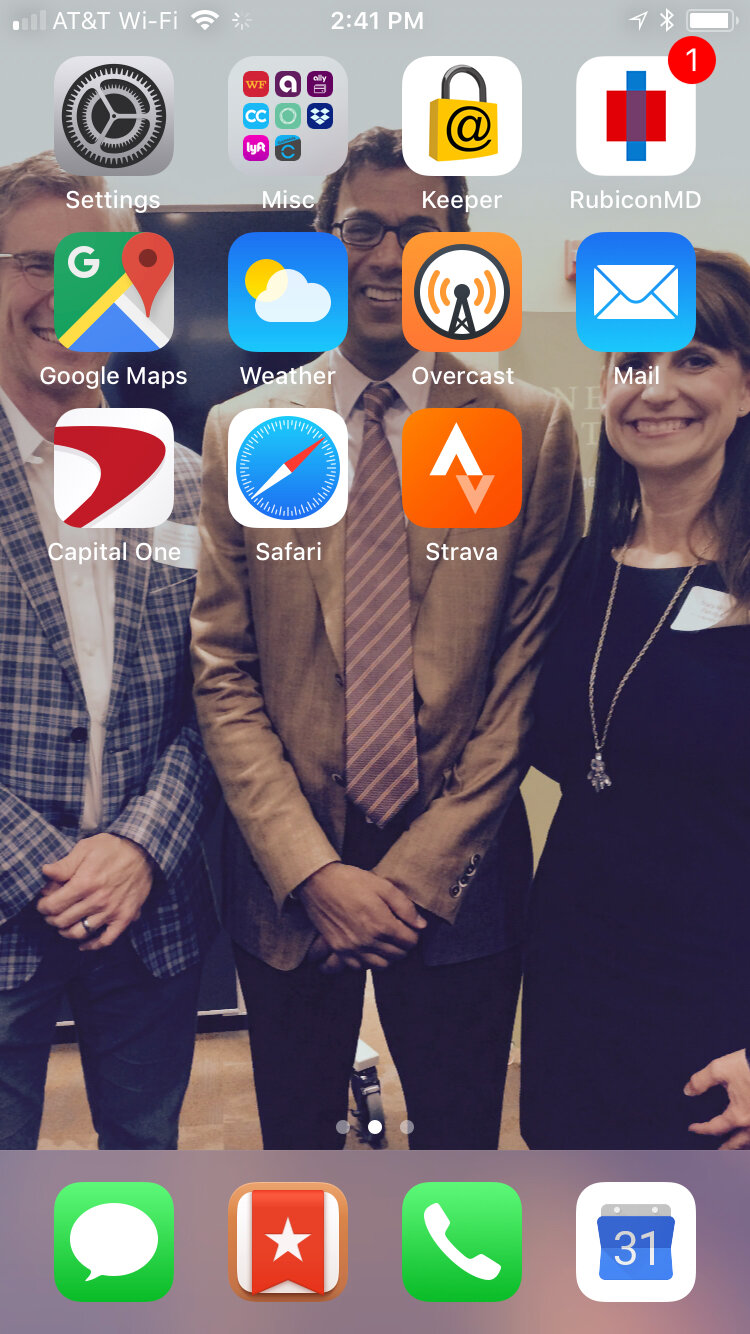I’m a big fan of physician-author Dr. Atul Gawande. Like, a big fan. Want evidence? Once upon a time the screen background of my phone was a picture of my wife and I with Dr. Gawande:
Just me, Atul, and Dr. Tracy Williams. No big deal. Eat your heart out on that plaid jacket, Pete Campbell.
My screen background is now a picture of my kids at a bike race (I’ve grown). Recently, and not because of garden-variety celebrity worship, I’ve been re-reading some of his 2009 book The Checklist Manifesto. I highly recommend it, and I thought I would share some of the lessons of the book that might especially resonate in the Time of Remote Work Due to COVID.
Gawande is careful to craft a message that a true checklist to help us accomplish involved tasks is not like your grocery list. It’s more like a catalyst to action, meant to free people up rather than restrict them. To help us write checklists that meet these needs, he recommends a “Checklist for checklists,” of sorts. Here are the parts that I find especially useful:
Try to define what kind of problem are you trying to solve. Is it fairly simple, like baking a cake? Is it complicated, like launching a rocket, where many, many things can go wrong? Or is it complex, like raising a child, where the inputs into the problem and the child’s response to them are constantly changing?
With the complexity of the problem in mind, what kind of list do you need? Some lists are more oriented toward “doing,” like baking that cake, while others are more oriented toward “reviewing,” like the pre-flight checklists in airplanes.
What kind of items do you need? Some checklists, like building an addition to your home, will require mostly actions. Other checklists, like preparing for a recurring meeting, are mostly communications.
Remove any items you assume list users will just do without prompting. In the process of compiling this I’ve deleted bullet points around identifying decision points and defining the problem. You already know to do those.
Identify the critical items and keep them. Consider emphasizing them by highlighting or installing alerts, such as on your phone if it’s a personal list, or on a poster or any software package the task needs in order to run if the list is shared among many, such as in the clinics we at KBGH work in.
Leave room for judgement. No one wants to sit through a meeting where the food for the office Christmas party (remember those?) is debated for an hour. Leave someone with a budget and any attendees’ life-threatening food allergies and see how she does.
Simplify the language if possible.
If the checklist is shared, adjust the order and layout for clarity if possible.
For checklists that have dire consequences, like the aviation checklists above or the preoperative checklists pioneered by Dr. Gawande, trial the list in real-world situations if possible before it goes into daily use.
Gather feedback from every potential user and refine the list based on that feedback. Dr. Gawande’s surgical checklist wasn’t just written and reviewed by surgeons. It was reviewed and modified by everyone involved in the care of the patient, from the orderly wheeling her into the room to the surgeon and anesthesiologist to the circulating nurses.
Maintain the list over time to keep up with its context. Checklists and clinic protocols require care and feeding just like your pets.
Treat the list as a tool, not as a religious tome. We at KBGH are fans of the care guidelines developed and used within the Kaiser health systems, such as this one for hypertension care (scroll to the bottom). But we know that a small number of patients will not be well-served by that care algorithm. That’s why doctors and nurses are trained to think critically.
Diffuse the list. Make sure it is available to everyone who may need it. That may mean posting it online.
Do you use checklists for complex tasks in your workplace? Let us know!


